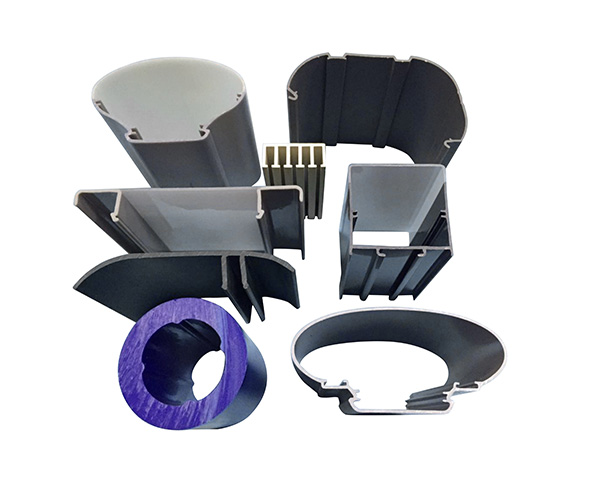The principle of injection molding is to add granular or powdered raw materials to the hopper of the injection machine. The raw materials are heated and melted into a flowing state. Pushed by the screw or piston of the injection machine, they enter the mold cavity through the nozzle and the casting system of the mold , Harden and set in the mold cavity. Factors affecting the quality of injection molding: injection pressure, injection time, injection temperature.

Plastic Injection Profiles
Plastic injection profiles supplier believes its advantages:
Short molding cycle, high production efficiency, easy to achieve automation; can form plastic parts with complex shapes, precise dimensions, and metal or non-metal inserts; stable product quality; wide range of applications.
Disadvantages: The price of injection equipment is high, and the structure of the injection mold is complicated. High production cost, long production cycle, not suitable for the production of single small batches of plastic parts
Applications: In industrial products, plastic injection profiles have: kitchen supplies, housings for electrical equipment, toys and games, various products in the automotive industry, and many other product parts.
Extrusion: Also known as plastic extrusion, it is mainly suitable for the molding of thermoplastics, but also suitable for the molding of thermosetting and reinforced plastics with good fluidity. The molding process uses a rotating screw to extrude the heated and melted thermoplastic raw material from a die with a desired cross-sectional shape, and then sets it with a shaper, and then cools and solidifies it with a cooler to become the required cross-section product.
Process features: low equipment cost; simple operation, easy control of the process, and easy to achieve continuous automated production; high production efficiency; uniform and dense product quality; various cross-section products or semi-finished products can be formed by changing the die head die
Application: In the field of product design, extrusion has strong applicability. The types of extruded products include pipes, films, rods, monofilaments, ribbons, nets, hollow containers, windows, door frames, plates, cable claddings, monofilaments and other shaped materials.
Blow molding: The molten thermoplastic material extruded from the extruder is clamped into a mold, and then air is blown into the material. The molten material expands under the action of air pressure, is adhered to the wall surface of the mold cavity, and is finally cooled. Method of curing into the desired product shape. Blow molding is divided into two types: film blow molding and hollow blow molding:
Film blow molding: Film blow molding is to extrude molten plastic from a circular thin tube in the circular gap of the die of the extruder, and at the same time blow compressed air from the central hole of the head to the inner cavity of the thin tube. Blow into a tubular film with a larger diameter, and take it up after cooling.
Hollow blow molding: Hollow blow molding is a secondary molding technology that uses a gas pressure to blow a rubber-like parison closed in a mold cavity into a hollow product, which is a method of producing hollow plastic products. Hollow blow molding has extrusion blow molding, injection blow molding, and stretch blow molding according to the manufacturing method of the parison.
1) Extrusion blow molding: Extrusion blow molding is to use an extruder to extrude a tubular parison, clamp it in the mold cavity while it is hot, and seal the bottom, and then blow compressed air into the tube cavity.
2) Injection blow molding: The used parison is obtained by injection molding. The parison is left on the core mold of the mold. After the mold is closed with a blow mold, compressed air is introduced from the core mold to inflate the parison, cool it, and obtain the product after demolding.
3) Stretch blow molding: Place the parison that has been heated to the stretching temperature in a blow mold, use a stretching rod to perform longitudinal stretching, and use blown compressed air to perform transverse stretching and inflation to obtain method.
Advantages: uniform product wall thickness, small weight tolerance, less post-processing, and small waste corners; suitable for producing small refined products with large batches.
Application: Film blow molding is mainly used to make plastic thin molds; hollow blow molding is mainly used to make hollow plastic products.